mobile View, to the German Version tap the flag


- Sultanate of Terengganu
- federal state of Malaysia
- own name: Terengganu Darul Iman
• Flags
• Historical Flags
• Meaning/Origin of the Flag
• Coat of Arms
• Meaning/Origin of the Coat of Arms
• Map
• Map of the Federal States of Malaysia
• Numbers and Facts
• History
• Origin of the Country's Name
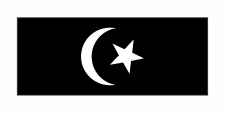
since 1953,
National flag,
ratio = 1:2,
Source, by: Die Welt im bunten Flaggenbild



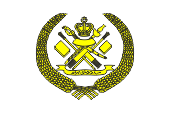
Standard of the Sultan,
ratio = 2:3(?),
Source, by: Flags of the World





1832–1912,
National flag and flag of the Sultan,
Source, by:
Die Welt im bunten Flaggenbild




1912–1933,
National flag,
ratio – ratio = 2:3,
Source, by:
Die Welt im bunten Flaggenbild,
World Statesmen



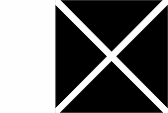
1925–1933,
State flag,
ratio – ratio = 2:3,
Source, by:
Die Welt im bunten Flaggenbild,
World Statesmen



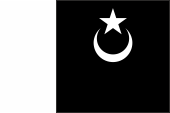
1933–1953,
National flag,
ratio – ratio = 2:3,
Source, by:
Wikipedia (D),
World Statesmen



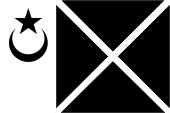
1933–1947,
State flag,
ratio – ratio = 2:3,
Source, by:
Die Welt im bunten Flaggenbild,
World Statesmen



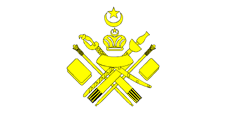
ca. 1933 – ca. 1960,
Standard of the Sultan,
ratio – ratio = 1:2,
Source, by:
Die Welt im bunten Flaggenbild




The current flag of Terengganu dates from 1953 and is solid black with a white border and features crescent and star (symbolism of Islam) in white in the center. The white border symbolizes the power of the Sultan, which protectively surrounds the people (represented by the colour black). Terengganu (like Kelantan) was originally part of Siam (Thailand). When Terengganu partially separated from Siam in 1832, a plain white flag was used. Later the flag became black, and only the first third of the flagpole remained as a white stripe. The reasons can only be speculated: The Sultan of Terengganu introduced a white personal flag, as was common practice with most Malay states. In the interest of differentiation, the national flag now had to be changed. The country's state flag or official flag (flag for offices and authorities) was distinguished by a white diagonal cross in the black field of the flag. From 1933 onwards, the crescent and star in white were added to the black field of the flag on the national flag. The official flag was now distinguished from this by inserting a crescent and star in black into the white stripes of the flag. On 1st of April in 1946, the country became a member of the Malayan Union. A little later, the national flag became superfluous due to the new federal authorities. The Malayan Union was reorganized in 1948 and became the Malay Federation under a British High Commissioner, which achieved independence from United Kingdom in 1957 as the Kingdom of Malay Federation. In 1963 the Kingdom of Malaysia was founded. The common economic and defense policy from 1948 made the naval and commercial flags of the member states superfluous. The country's provinces all have their own flags, with each province using a plain flag bunting with the respective colour of the province, which features the national flag of Terengganu in the top corner.
Source:
Die Welt im bunten Flaggenbild,
Wikipedia (EN),
Flaggen Enzyklopädie,
World Statesmen


Coat of arms of Terengganu,
Source, by: Flags of the World

Terengganu does not have a coat of arms in the traditional sense, it is more of a seal, a white high oval that shows symbols of state power in its center: the Sultan's crown, sword and dagger as symbols of supreme power, two books (Quran and Kitab), and the service sash of the ladies-in-waiting. At the top, a crescent and star as symbols of Islam (the predominant religion), at the bottom, in Arabic Jawi script, the name of the country.
Source:
Die Welt im bunten Flaggenbild,
Flags of the World

Location:

interactive Map
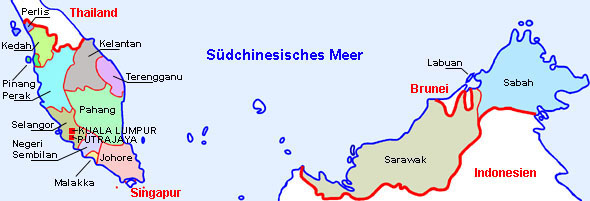
Map: Volker Preuß, to Malaysia? → click or tap here

Area: 5.033 square miles
Inhabitants: 1.149.440 (2020), thereof 90% Malays, 4% Chinese, 0,5% Indian
Religions: 97% Muslim, 2,5% Buddhist
Density of Population: 228 inh./sq.mi.
Capital: Kuala Terengganu, 375.424 inh. (2020)
official Language: Malaysian
other Languages: Semaq Beri, Bateq, Chinese, English
Currency: Malaysian currency
Time Zone: GMT + 8 h
Source: Wikipedia (EN),
www.dosm.gov.my

7th–12th cent. · to the Shrividjaja Empire
14th–15th cent. · part of Johor to the Siamese Empire
1602 · the Netherlands establish in Terengganu a small colony which they had to leave in 1824 after the Treaty of London with United Kingdom
19th cent. · under Siamese supremacy
1725 · founding of the Sultanate of Terengganu
1832 · Terengganu separates partially from Siam
1909 · Anglo-Siamese Treaty, the present-day border between Malaysia and Thailand is created, as Siam cedes Kedah, Kelantan, Perlis and Terengganu to United Kingdom and combines these countries in 1914 with Johor to form the "Non-Federated Malay States"
1941-1943 · occupied by Japanese Troops
1943–1945 · annexed to Thailand
1st of April 1946 · creation of the Malaysian Union by confederation of the Malaysian Sultanates (British protectorates) and the Straits Settlements (British crown colonies), however without Singapore
1948 · re-organization of the Malaysian Union, creation of the Malaysian Federation under a British High Commissioner
31st of August 1957 · independence and proclamation of the Kingdom of Malaysian Federation
16th of September 1963 · proclamation of the Kingdom of Malaysia
Source: 1) Atlas zur Geschichte,
2) World Statesmen
3) Wikipedia (DE)

There are several theories about the origin of the name "Terengganu". One theory, probably the most plausible, traces the origin of the name to the Malay words "terang ganu" which means "bright rainbow".
Source: Wikipedia (EN)


![]()



























